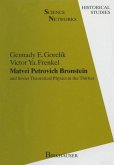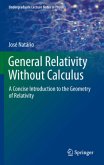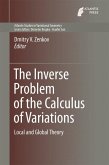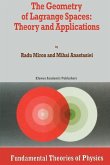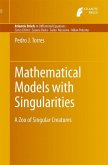Astronomers do not do experiments. They observe the universe primarily through detect ing light emitted by stars and other luminous objects. Since this light must travel through space to reach us, variations in the metric of space affects the appearance of astronomical objects. These variations lead to dramatic changes in the shape and brightness of astronom ical sources. Because these variations are sensitive to mass rather than to light, observations of gravitational lensing enable astronomers to probe the mass distribution of the universe. With gravitational lensing observations, astronomers are addressing many of the most important scientific questions in astronomy and physics: - What is the universe made of? Most of the energy and mass in the universe is not in the form of luminous objects. Stars account for less than 1 % of the energy density of the universe. Perhaps, as much as another 3% of the energy density of the universe is in the form of warm gas that fills the spacebetween galaxies. The remaining 96% of the energy density is in some yet unidentified form. Roughly one third of this energy density of the universe is "dark matter," matter that clusters gravitationally but does not emit light. Most cosmologists suspect that this dark matter is composed of weakly interacting subatomic particles. However, most of the energy density of the universe appears to be in an even stranger form: energy associated with empty space.
"The time is ripe for a comprehensive volume explaining gravitational lensing to mathematicians and reviewing relevant singularity theory for astrophysicists. This is such a book. [It] . . . is accessible and attractive, . . . ranging widely through the history, physics and mathematics to paint a full picture of this . . . theory. This most attractively presented book summarizes current mathematical methods in the field and sets the stage for further exciting developments . . . A collaboration between a mathematical physicist, a mathematician, and a physicist, it has something for everybody."
-Mathematical Reviews
"This is a well-developed monograph on gravitational lensing both from the observational and from the mathematical points of view. However, also independent of the present interest in gravitational lensing, this book is a good source for several types of singularity theories . . . index and bibliography are very well done."
-Zentralblatt Math
"The rather voluminous monograph to be reviewed here covers both astrophysical and mathematicsl aspects of gravitational lensing. The scientific backgrohnd of the three authors guarantees that they are the right persons for such an enterprise. Arlie Petters is one of very few scientists who are competent in mathematics as well as in astrophysics. His coauthors are a pure astrophysicist and a pure matheamtician: Joachim Wambsganss is aleading expert on gravitational lensing as a tool in astrophysics and Harold Levine has made important contributions to the theory of signularities of maps in the 1960s. . . "It is not much of an exaggeration to say that large parts of this monograph can serve as a self-contained matheamtics text-book on the theory of singularites of maps and related subjects, and even a particularly well-written one. So I would not hesitate to recommend it to pure matheamticians who will find a fineexposistion of a subject from their field, along with applicaions to astrophysics which should be very well readable for them. I also recommend the book to pure astrophysicists, because it contains a lot of material which has a high atrophysical relevance. . . If one compares to tbook by Petters, Leven and Wambsganss with the earlier mongraph on gravtiational lenses by Schneider, Ehlers and Falco, one finds that there is not very much overlap. The two books rather complement each other."
---Gen. Relativ. Gravit.
-Mathematical Reviews
"This is a well-developed monograph on gravitational lensing both from the observational and from the mathematical points of view. However, also independent of the present interest in gravitational lensing, this book is a good source for several types of singularity theories . . . index and bibliography are very well done."
-Zentralblatt Math
"The rather voluminous monograph to be reviewed here covers both astrophysical and mathematicsl aspects of gravitational lensing. The scientific backgrohnd of the three authors guarantees that they are the right persons for such an enterprise. Arlie Petters is one of very few scientists who are competent in mathematics as well as in astrophysics. His coauthors are a pure astrophysicist and a pure matheamtician: Joachim Wambsganss is aleading expert on gravitational lensing as a tool in astrophysics and Harold Levine has made important contributions to the theory of signularities of maps in the 1960s. . . "It is not much of an exaggeration to say that large parts of this monograph can serve as a self-contained matheamtics text-book on the theory of singularites of maps and related subjects, and even a particularly well-written one. So I would not hesitate to recommend it to pure matheamticians who will find a fineexposistion of a subject from their field, along with applicaions to astrophysics which should be very well readable for them. I also recommend the book to pure astrophysicists, because it contains a lot of material which has a high atrophysical relevance. . . If one compares to tbook by Petters, Leven and Wambsganss with the earlier mongraph on gravtiational lenses by Schneider, Ehlers and Falco, one finds that there is not very much overlap. The two books rather complement each other."
---Gen. Relativ. Gravit.


